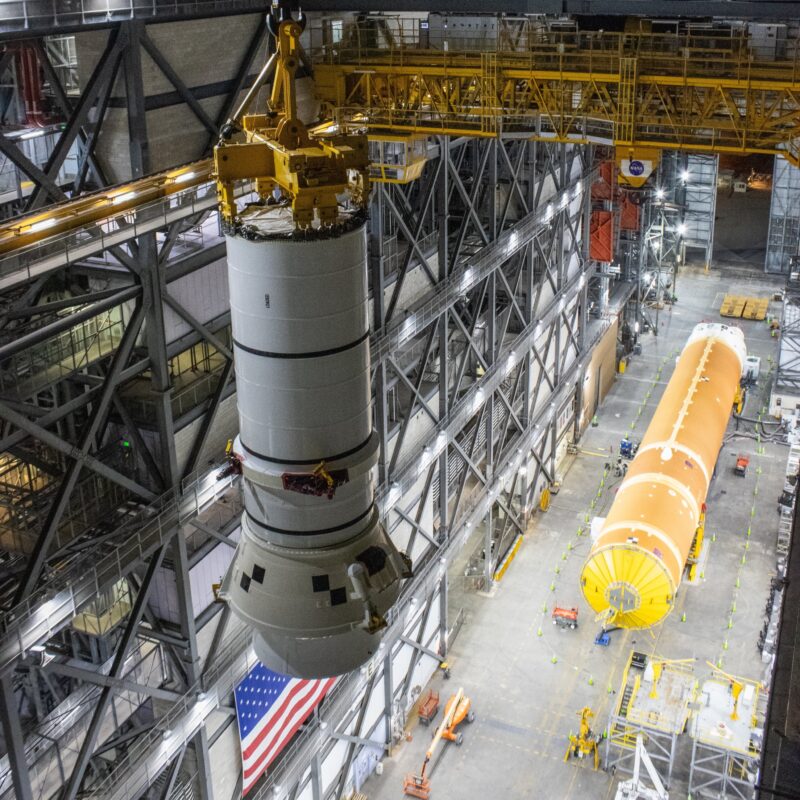
2025 will be a memorable year for the spaceflight community as Artemis 2, the first piloted mission to the Moon in over half a century, takes flight. Or will it? There has been a great deal of uncertainty surrounding this landmark mission ever since NASA disclosed issues with the Orion spacecraft’s heat shield, life support system, and batteries in 2025. This uncertainty has been amplified as target dates for stacking the elements of the mission’s Space Launch System (SLS) rocket have come and gone. However, a recent winter flurry of activity at the Kennedy Space Center suggests that preparations for Artemis’ crewed flight test are again in motion. These key milestones are headlined by the stacking of the first two Solid Rocket Booster segments on the Mobile Launcher.
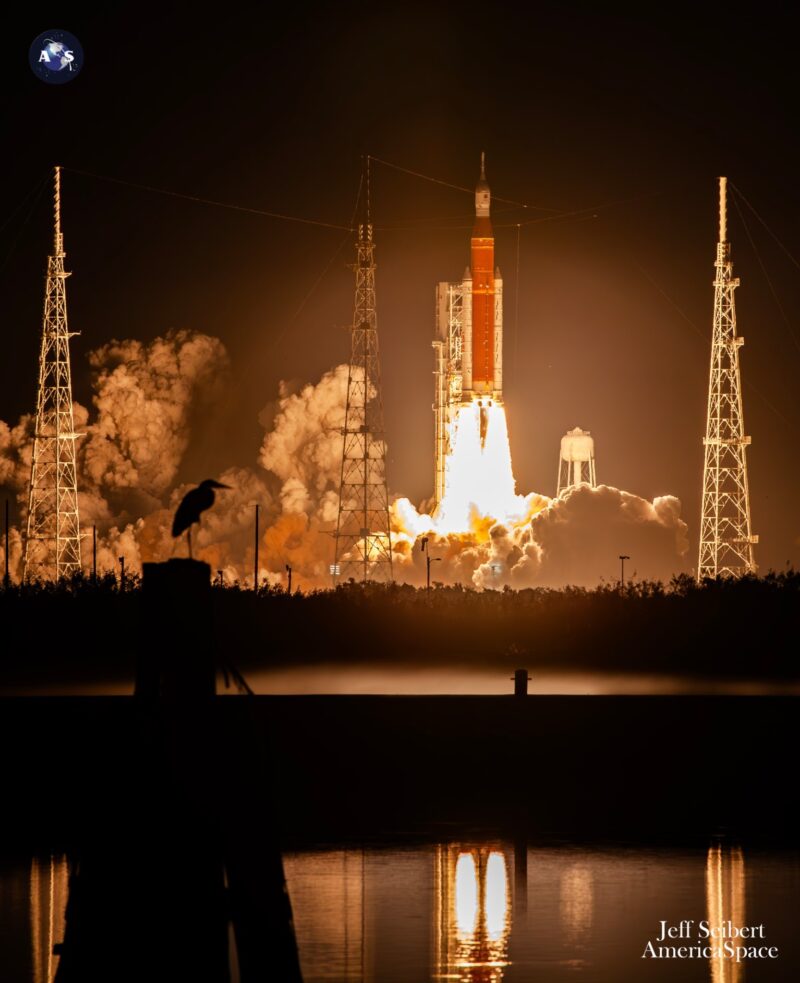

The Solid Rocket Boosters (SRBs) are a key component of the SLS rocket. With 25% more thrust than their ancestors, which propelled the Space Shuttle into orbit, they are the most powerful rocket motors ever built. At liftoff, each booster will produce 3.28 million pounds of thrust. Combined, the two SRBs produce over 75% of SLS’ thrust at liftoff, and their primary role is to loft the rocket’s core stage and the crew’s Orion spacecraft above much of Earth’s atmosphere. At this point, the core stage’s ultra-efficient RS-25 main engines take over the primary responsibility for accelerating Orion to orbital velocity. When it lifts off, the Artemis 2 SLS will become the most powerful rocket in history to fly with astronauts onboard.
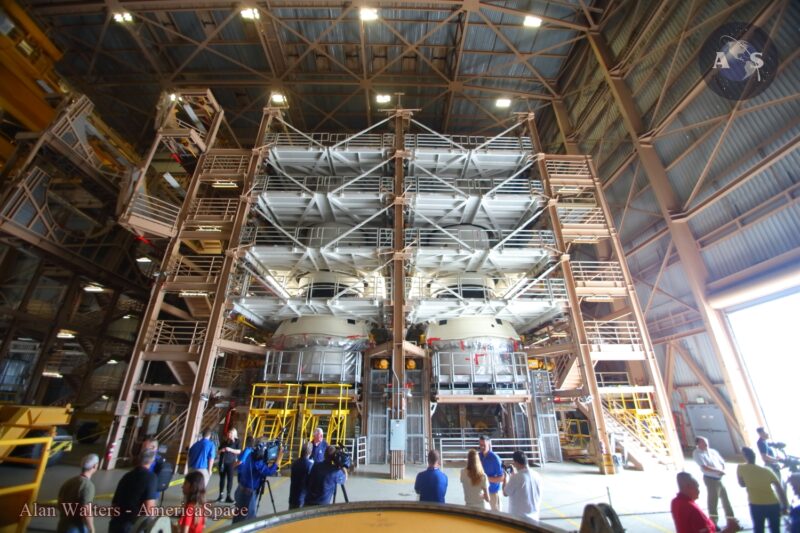

The boosters arrived at the Kennedy Space Center over a year ago on September 28th, 2023. To simplify transport, each booster is broken into five segments, each of which is shipped from the manufacturing site in Promontory, Utah to the launch site. Following their arrival, the aft segments, which will be at the base of the rocket, were bolted to their nozzles and their conical aft skirts which house electronics and separation motors. The center segments received NASA’s iconic “worm” logo. However, the boosters spent most of their time in storage, waiting for stacking to begin.
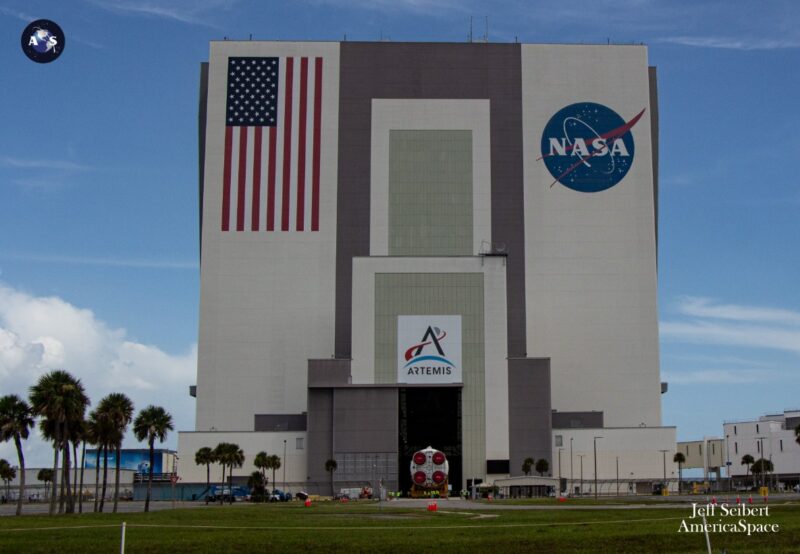

That hiatus ended last Tuesday. The first of the aft segments was transported to the iconic Vehicle Assembly Building around midday. It was attached to a specialized crane and carefully lifted into the High Bay where Artemis 2’s rocket is being assembled. Once there, technicians secured it in place on the Mobile Launcherusing four massive bolts, each of which is threaded through a support post. These anchors will support the entire 5.75-million-pound mass of the rocket when it is sitting on its launch pad. On Thursday, the SLS team repeated this process with the second aft segment.
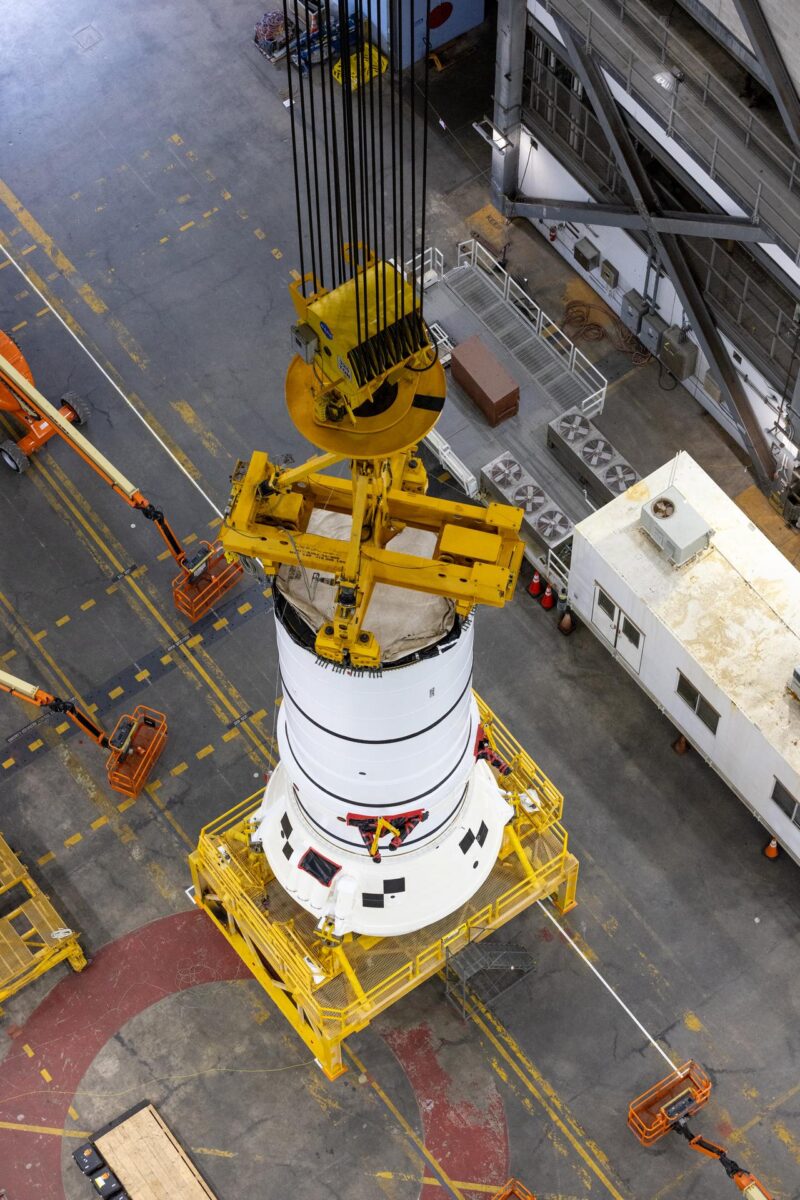

This is a major milestone for the Artemis program, especially as NASA enters into a presidential transition. The emplacement of the aft segments marks the beginning of the assembly of the mighty rocket which will one day launch astronauts Reid Wiseman, Victor Glover, Christina Koch, and Jeremy Hansen on their historic 10-day lunar flyby. To put this in a broader context, this event is equivalent to stacking the first stage of Apollo 8’s Saturn V. It also indicates that as of last week, NASA is confident that no major showstoppers, such as a requirement to replace Orion’s heat shield, stand in the way of an Artemis 2 launch in late 2025 or early 2026.
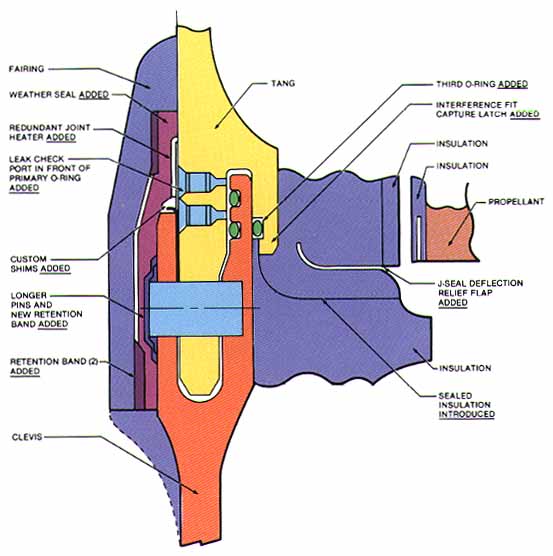

The next stage of the stacking process entails placing the next two SRB segments atop the elements which were just installed. This will be a powerful indicator of NASA’s internal target date for the launch. SRB segments are connected by a field joint. These connectors feature a single metallic ring running around the circumference of the upper segment. This slides into a groove within a larger ring on top of the lower segment. The two components are then secured together with dozens of bolts, and the joint is sealed with multiple rubber O-rings which were redesigned to maximize safety following the Challenger tragedy.
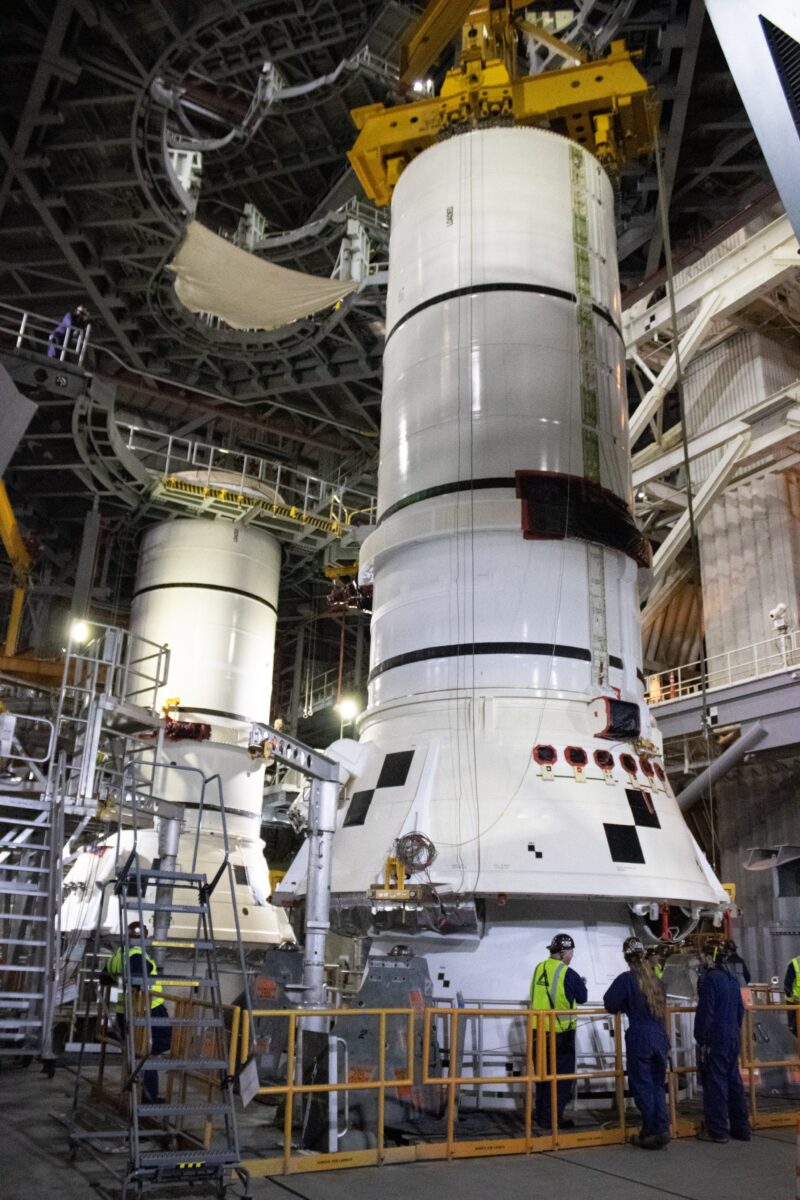

The issue is that the thin field joints begin to slowly deform when they begin to support the staggering weight of a fully-fueled booster segment. The boosters are only certified to be stacked for 12 months. To be clear, this is not a firm expiration date. Due to a series of hydrogen leaks, Artemis 1’s SRBs remained bolted together for 22 months before that mission finally launched without issue. However, NASA is extremely conservative with any vehicle which is responsible for the lives of its astronauts, and for good reason. It is unlikely that they would stack the boosters for a crewed mission if they were not confident that it would launch within a 12-month timeframe. If the next two segments are stacked before the New Year’s holiday, it will be a promising indicator that Artemis 2 will likely launch in 2025.
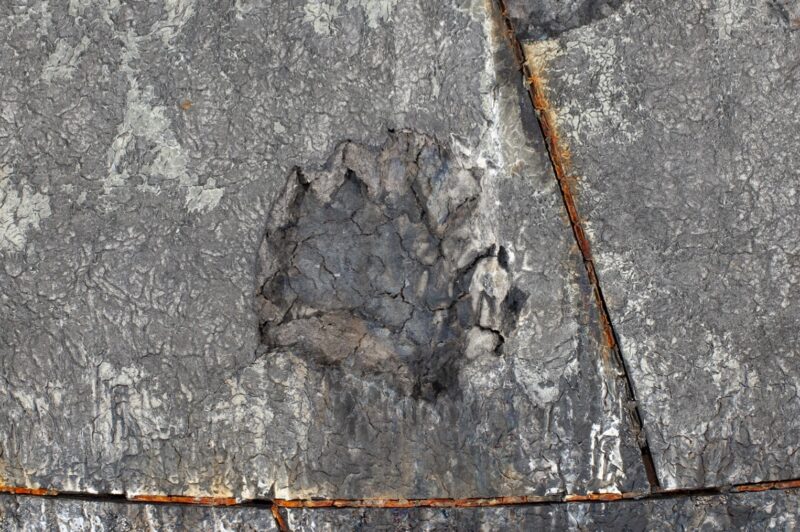

The remainder of the stacking process is currently on hold, pending a crucial decision regarding the Orion spacecraft’s heat shield. During reentry, Artemis 1’s heat shield lost dozens of large chunks of material through a process called spallation. The ablative material, called Avcoat, is supposed to slowly flake off as microscopic particles, carrying heat away from the capsule and its occupants. The spallation was completely unexpected.
A high-resolution image obtained by AmericaSpace through the Freedom of Information Act (FOIA) shows that the surfaces of the Avcoat blocks which constitute the heat shield cracked under the extreme heat of reentry. If these fractures penetrated deep enough, they might have led to the spallation which was seen following Artemis 1. Former astronaut Charlie Camarda estimates that the largest chunks penetrated approximately halfway through the capsule’s heat shield [1].
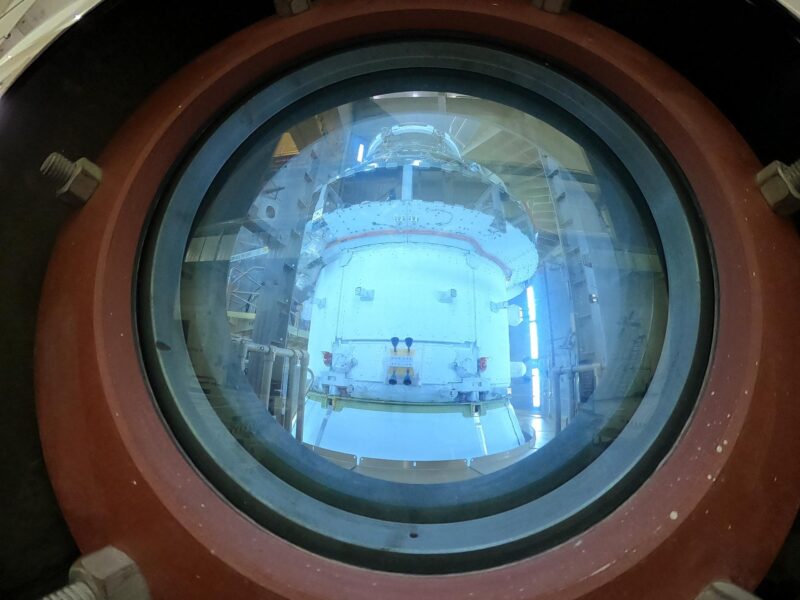

At last month’s Lunar Exploration Analysis Group meeting, Lori Glaze, the Deputy Associate Administrator for NASA’s exploration directorate, stated that NASA has determined the root cause of the spallation [2]. A recent Government Accountability Office (GAO) report concurred with this assessment. However, the agency is still attempting to determine whether modifying Orion’s trajectory will reduce the risk to the Artemis 2 crew to an acceptable level. If that is not the case, NASA will need to replace Orion’s heat shield, which would take over a year. Throughout November, the Orion program is experimenting with modified reentry heating profiles inside the unique arc jet facilities at the Ames Research Center. A final decision on how to resolve the heat shield issue should follow as early as December.
Follow AmericaSpace for space news, history, and more!
Missions » SLS » Missions » SLS » Artemis »
Posts associated with the SLS missions


